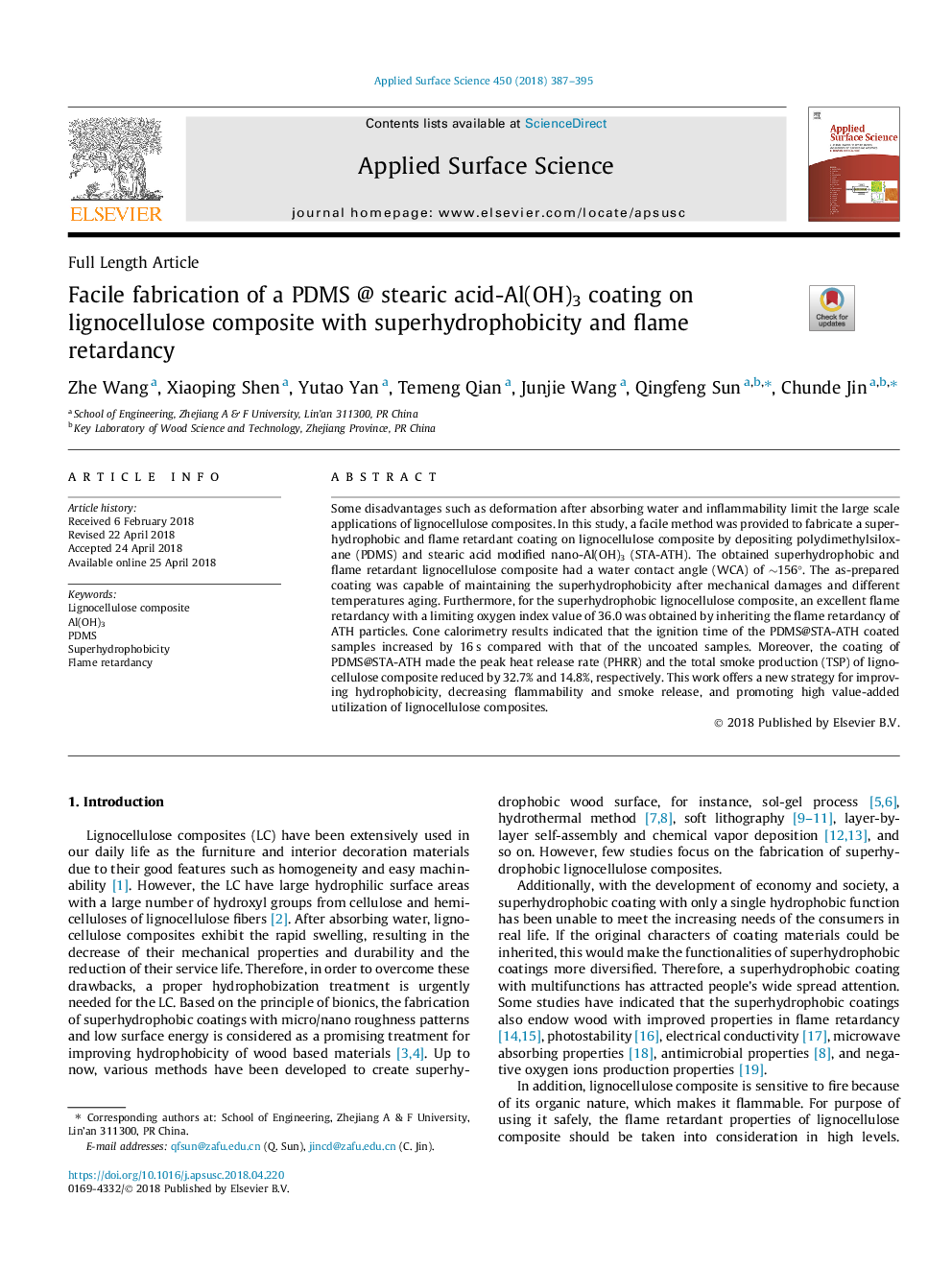| Article ID | Journal | Published Year | Pages | File Type |
|---|---|---|---|---|
| 7833605 | Applied Surface Science | 2018 | 9 Pages |
Abstract
Some disadvantages such as deformation after absorbing water and inflammability limit the large scale applications of lignocellulose composites. In this study, a facile method was provided to fabricate a superhydrophobic and flame retardant coating on lignocellulose composite by depositing polydimethylsiloxane (PDMS) and stearic acid modified nano-Al(OH)3 (STA-ATH). The obtained superhydrophobic and flame retardant lignocellulose composite had a water contact angle (WCA) of â¼156°. The as-prepared coating was capable of maintaining the superhydrophobicity after mechanical damages and different temperatures aging. Furthermore, for the superhydrophobic lignocellulose composite, an excellent flame retardancy with a limiting oxygen index value of 36.0 was obtained by inheriting the flame retardancy of ATH particles. Cone calorimetry results indicated that the ignition time of the PDMS@STA-ATH coated samples increased by 16â¯s compared with that of the uncoated samples. Moreover, the coating of PDMS@STA-ATH made the peak heat release rate (PHRR) and the total smoke production (TSP) of lignocellulose composite reduced by 32.7% and 14.8%, respectively. This work offers a new strategy for improving hydrophobicity, decreasing flammability and smoke release, and promoting high value-added utilization of lignocellulose composites.
Related Topics
Physical Sciences and Engineering
Chemistry
Physical and Theoretical Chemistry
Authors
Zhe Wang, Xiaoping Shen, Yutao Yan, Temeng Qian, Junjie Wang, Qingfeng Sun, Chunde Jin,
